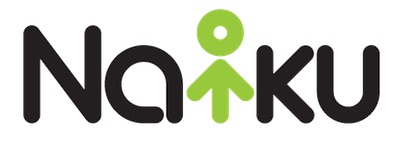The SAMR (Substitution Augmentation Modification Redefinition) Model has rightfully been receiving a lot of attention from school districts as they implement tablets and other edtech devices in the classroom. The model suggests a progression for adoption of technology, and we’ve received requests from educators for recommendations on how they could apply the SAMR model as they introduce next generation assessment. The following represents some basic steps for consideration; educators interested in trying these suggested examples in the classroom can use Naiku via a free trial by signing up here.
Substitution
In this phase, educators can use next generation cloud based assessment software to substitute for existing assessment practices such as instant polling with clickers or general classroom assessment using bubble sheets and scanners. Some examples of this substitution using Naiku:
- Teachers and students can use Quick Question for instant polling with any web enabled device to substitute for proprietary standalone student response (clicker) systems
- With Naiku’s Quick Key feature, teachers can use existing Word or PDF based tests. Students enter answer choices directly in their device rather than filling out a bubble sheet.
In each of these cases, it is easy to substitute existing functionality. Operation is enhanced through speed (for example immediate autoscoring of student tests) and flexibility (instant polling with any web enabled device rather than separate standalone devices).
Augmentation
In this phase, educators can begin to go beyond basic substitution by augmenting existing practices for enhanced benefit. Some examples of augmentation of classroom assessment practices using Naiku:
- Align questions to standards in existing generic Word or PDF tests with Quick Key to view student achievement and progress towards standards to inform their instruction.
- Import existing tests in standard test file formats (i.e. ExamView, TestGen, Moodle Quiz, etc) and align to standards to view student achievement and progress.
- Create new assessments using item types beyond conventional multiple choice. For example, teachers can use the test generator within Naiku to create short answer, matching, and other item types to more clearly assess student knowledge, while retaining benefits of autoscoring and standards aligned reports.
Modification
In this phase, educators can enhance their assessment practice by adding to or modifying their classroom assessment processes. Some examples using Naiku:
- Students can use Naiku’s “Tell Me More” feature to add written responses that complement their answer. This journaling/justification provides teachers greater clarity about student knowledge while also encouraging student communication skills.
- Teachers can modify how they create assessments by sharing items and assessments with fellow teachers. In Naiku, schools and districts can easily build custom item and assessment banks aligned to their curriculum and standards for all teachers to use.
- Teachers can use Naiku’s collaborative features to share student performance data from common assessments within PLCs and teacher-admin teams.
Redefinition
In this phase, teachers have an opportunity to redefine their classroom assessment practice. We suggest teachers implement student engagement and interactive feedback components to transform their assessments into learning opportunities. Examples include:
- Incorporating metacognitive features to encourage student self-assessment and awareness. In Naiku, students can express confidence in their answers while they are taking the test, and then reflect on their answers after test submission (and review of answers / answer rationale). By reconciling their answers and confidence expressed with the correct answer, students internalize what they know and don’t know.
- Goalsetting. Students can set goals for their learning, and then compare their performance with their goals to identify areas for improvement.
- Teachers can utilize feedback by viewing reports of student performance, confidence, and reflection data coupled with student journaling to inform their instruction. Teachers can also provide feedback to students, either automatically based on performance measures or custom feedback.
We hope this is helpful as you consider implementing next generation assessment using the SAMR model. Please let us know if you have additional suggestions!

